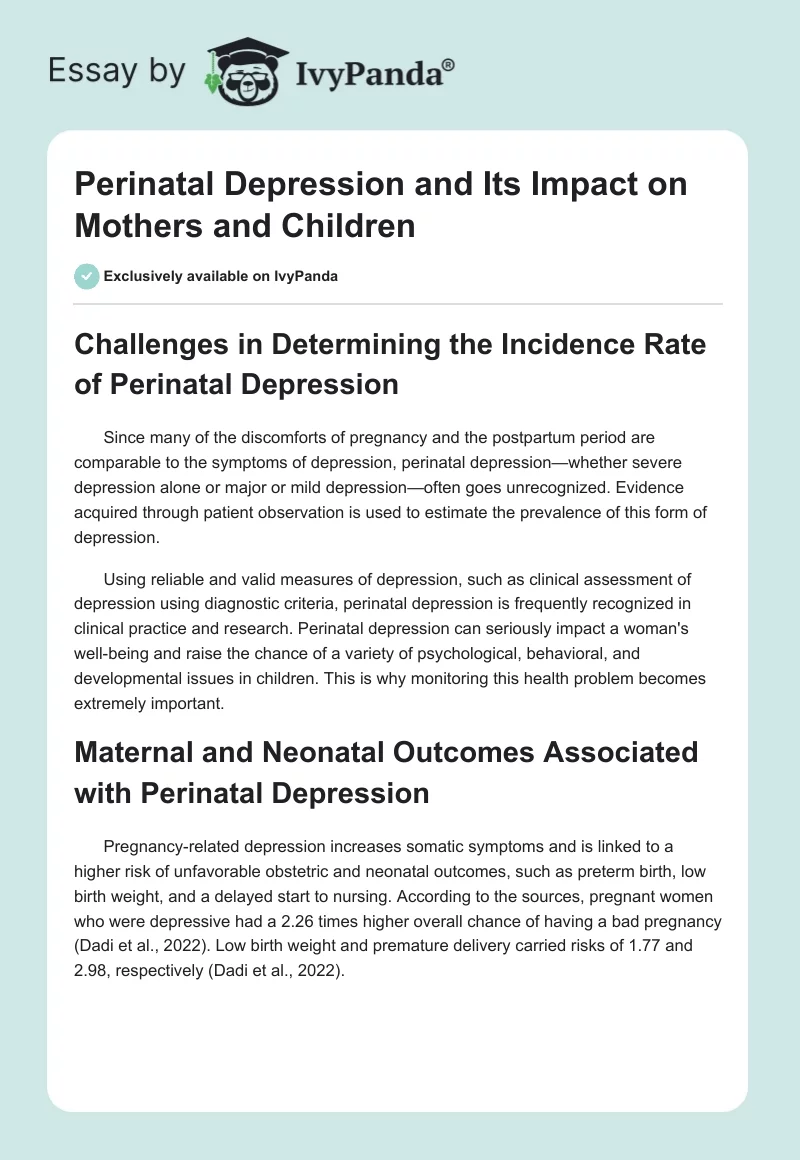Challenges in Determining the Incidence Rate of Perinatal Depression
Since many of the discomforts of pregnancy and the postpartum period are comparable to the symptoms of depression, perinatal depression—whether severe depression alone or major or mild depression—often goes unrecognized. Evidence acquired through patient observation is used to estimate the prevalence of this form of depression.
Using reliable and valid measures of depression, such as clinical assessment of depression using diagnostic criteria, perinatal depression is frequently recognized in clinical practice and research. Perinatal depression can seriously impact a woman’s well-being and raise the chance of a variety of psychological, behavioral, and developmental issues in children. This is why monitoring this health problem becomes extremely important.
Maternal and Neonatal Outcomes Associated with Perinatal Depression
Pregnancy-related depression increases somatic symptoms and is linked to a higher risk of unfavorable obstetric and neonatal outcomes, such as preterm birth, low birth weight, and a delayed start to nursing. According to the sources, pregnant women who were depressive had a 2.26 times higher overall chance of having a bad pregnancy (Dadi et al., 2022). Low birth weight and premature delivery carried risks of 1.77 and 2.98, respectively (Dadi et al., 2022).
Implementing USPTF’s Suggested Interventions for Perinatal Depression
Perinatal depression occasionally results in specific outcomes, like in Pranaiya, a woman who committed herself to her son Arthur (Kottasová & Anoushfar, 2022). The fact that this condition affects both the mother and her kid, as confirmed by the material, underlines the necessity for intervention.
Centers for at-risk moms can execute the suggested treatments. The USPSTF has found significant evidence that counseling therapies, including cognitive behavioral and interpersonal therapy, are helpful. This can take the form of discussions, support groups, and therapy sessions (US Preventive Services Taskforce, 2019). This concept can be implemented in medical centers such as the University Medical Center in Princeton.
Evaluating the Effectiveness of Perinatal Depression Interventions
Considering that they can help prevent the condition or early detection of prenatal depression, I would rate the effectiveness of these treatments as quite high. I advise regular screening of women at risk to check their psychological well-being and assess the situation’s development. Key data such as anxiety levels and sleep patterns should be the focus of attention during the evaluation of an intervention.
References
Dadi, A. F., Akalu, T. Y., Wolde, H. F., & Baraki, A. G. (2022). Effect of perinatal depression on birth and infant health outcomes: a systematic review and meta-analysis of observational studies from Africa. Archives of Public Health, 80(1), 1-11. Web.
US Preventive Services Taskforce. (2019). Perinatal depression: Preventive interventions. Recommendation: Perinatal Depression: Preventive Interventions | United States Preventive Services Taskforce. Web.
Kottasová, W. by I., & Anoushfar, L. (2022). Pranaiya was a happy mom – then she started talking about wanting to disappear. CNN. Web.


